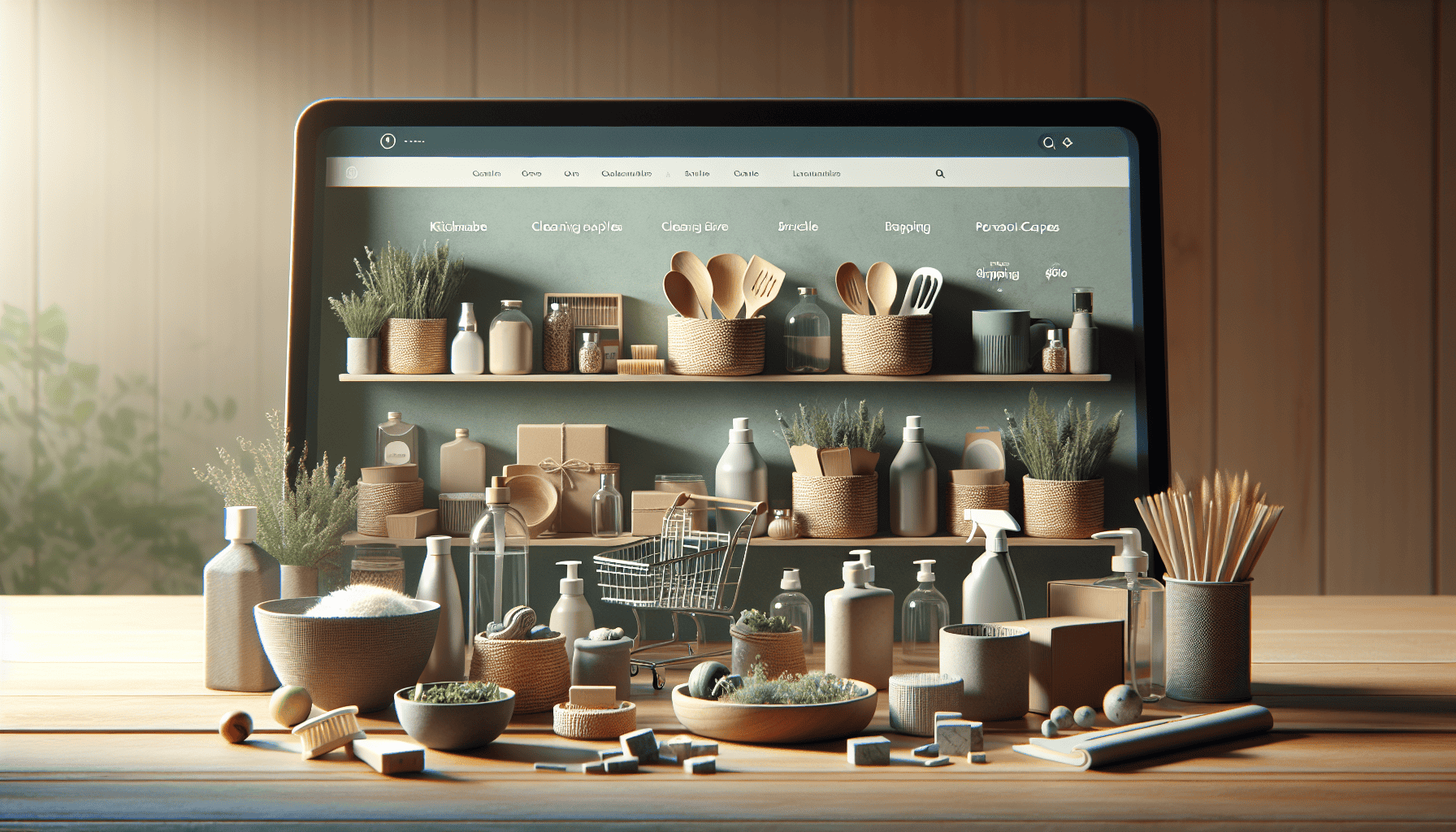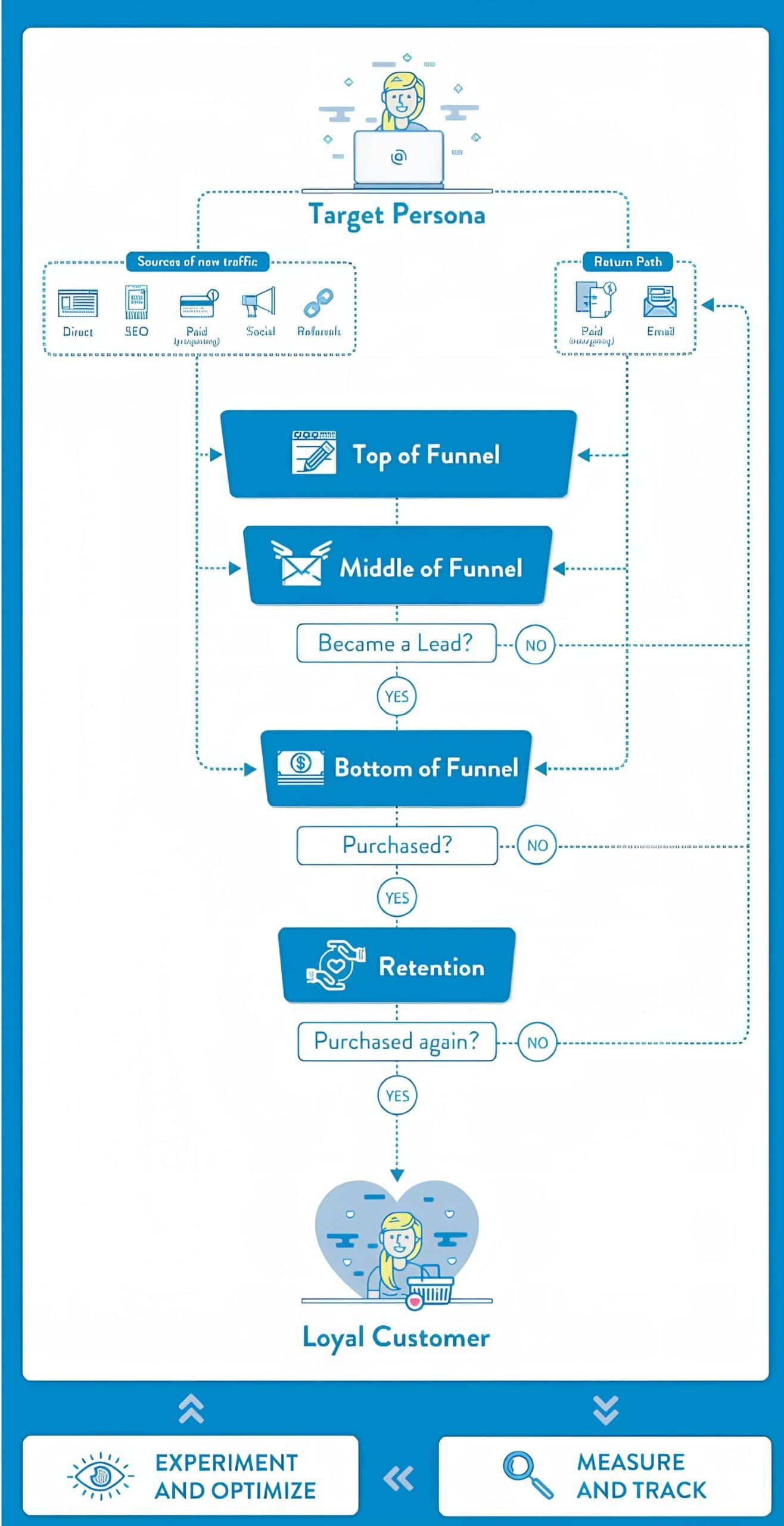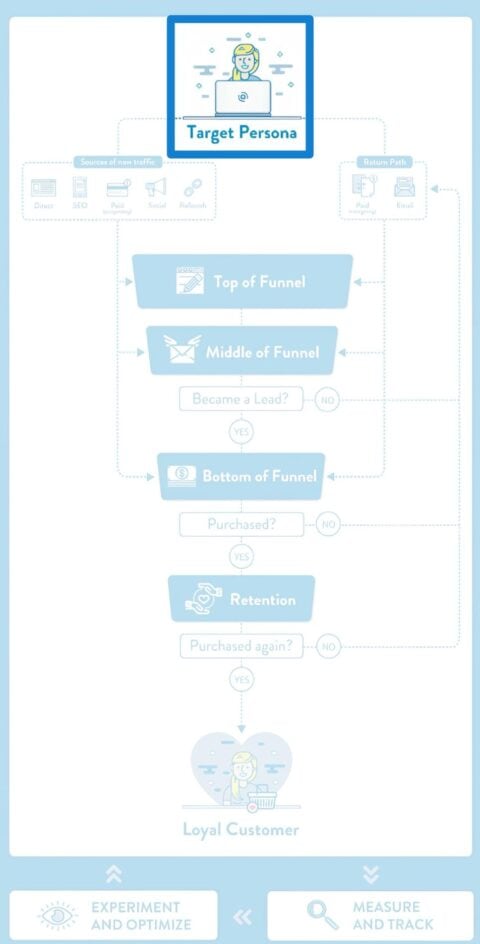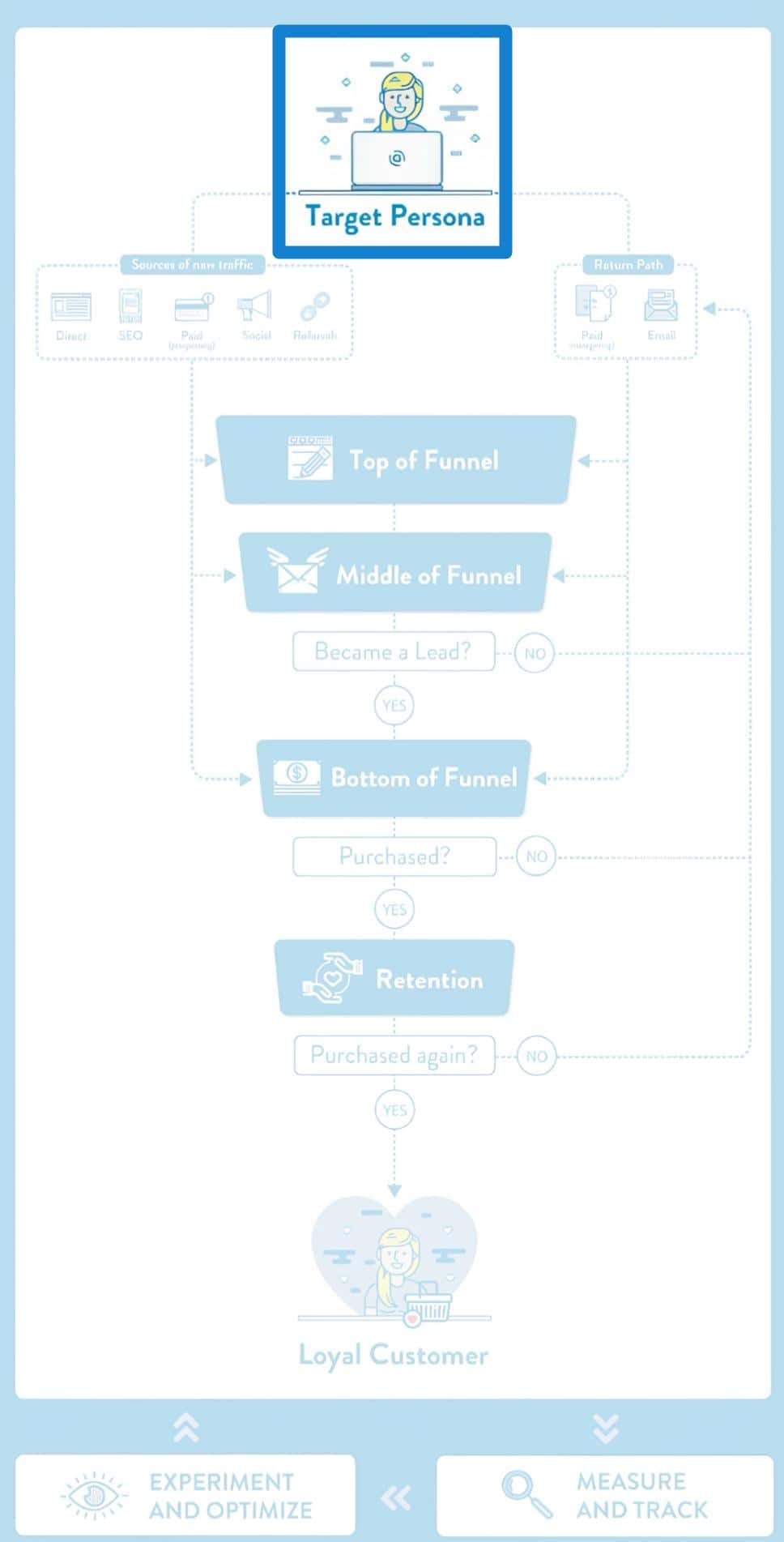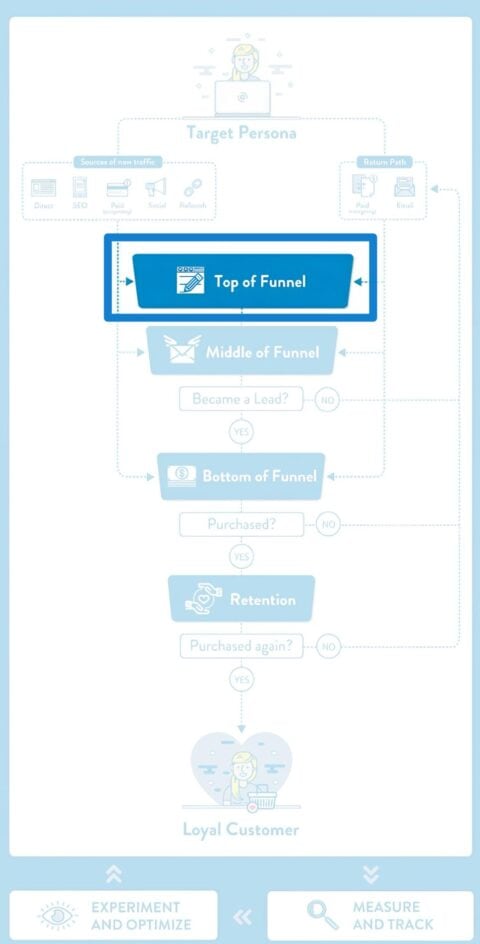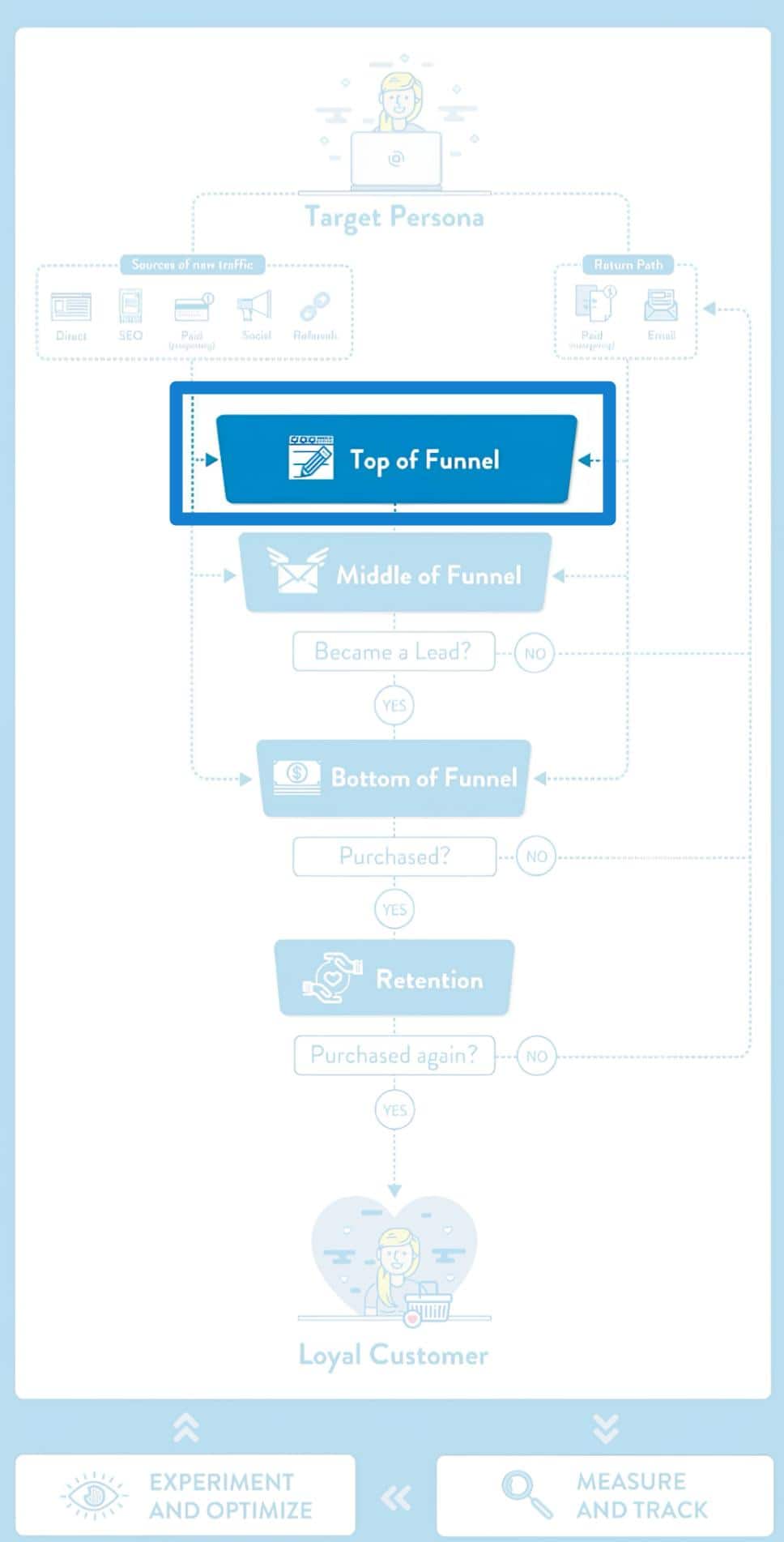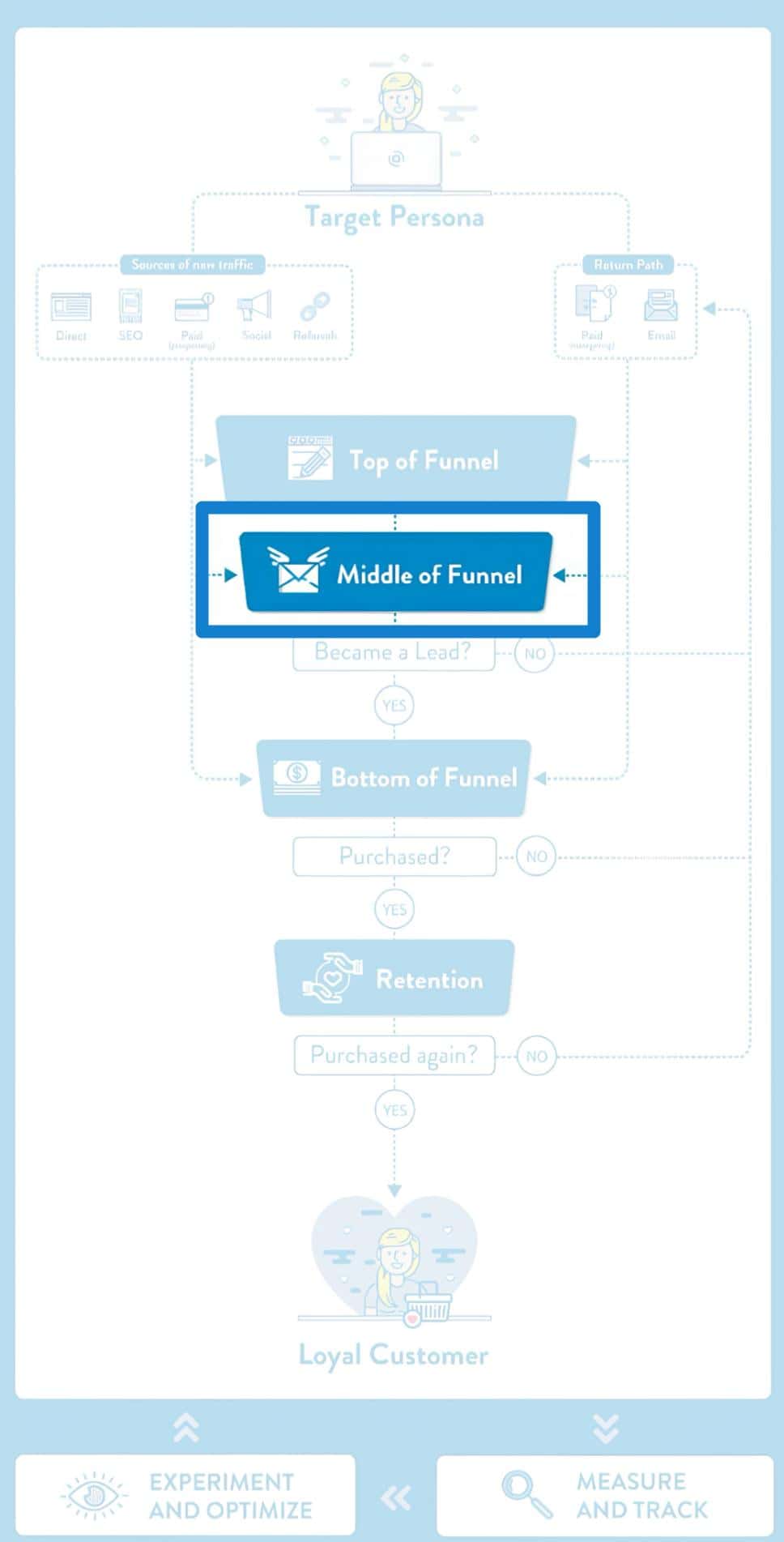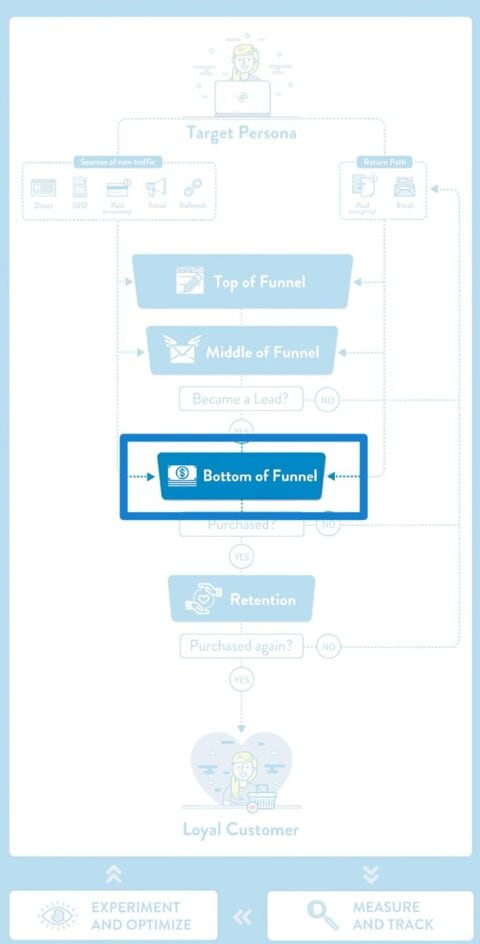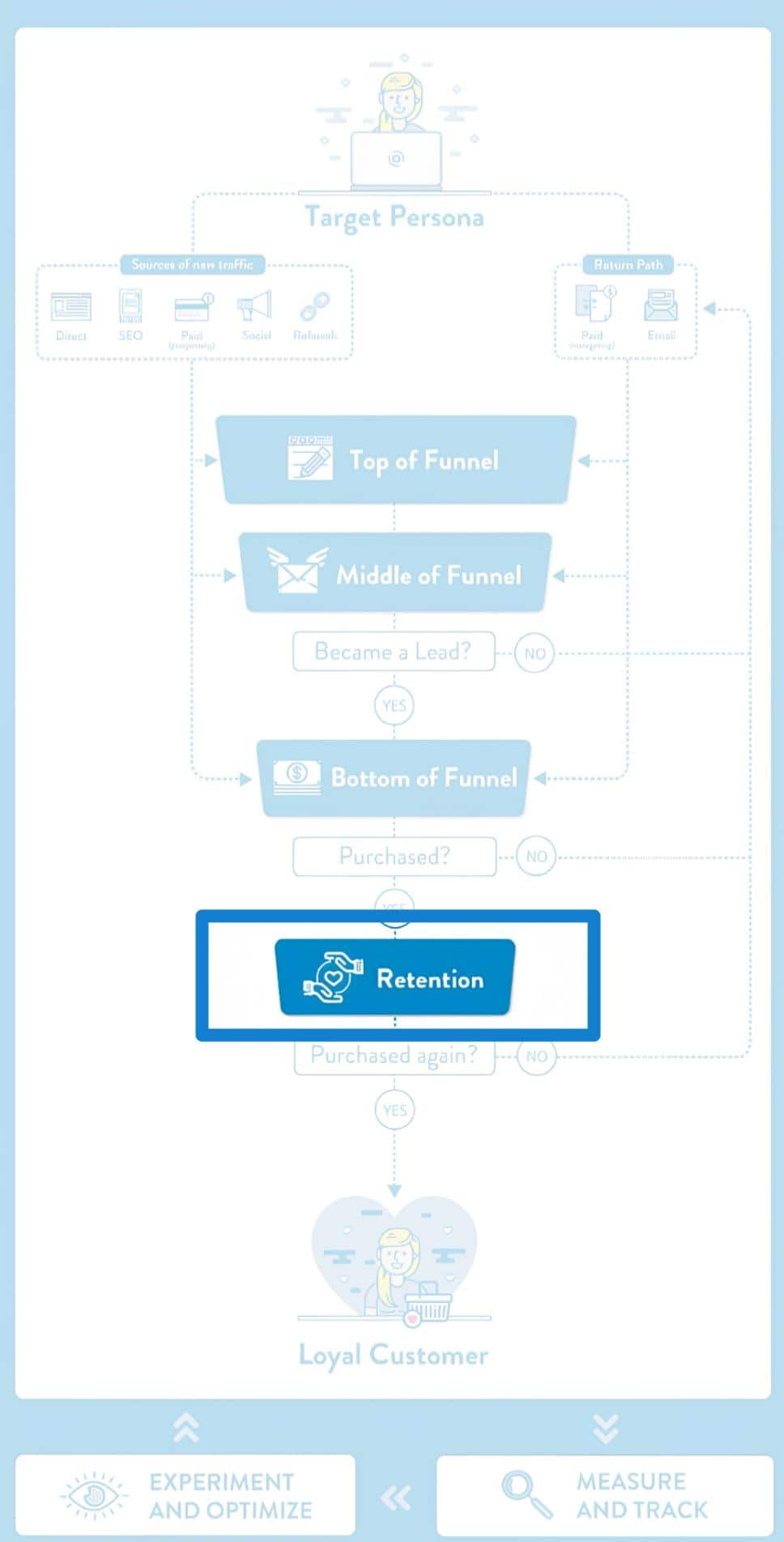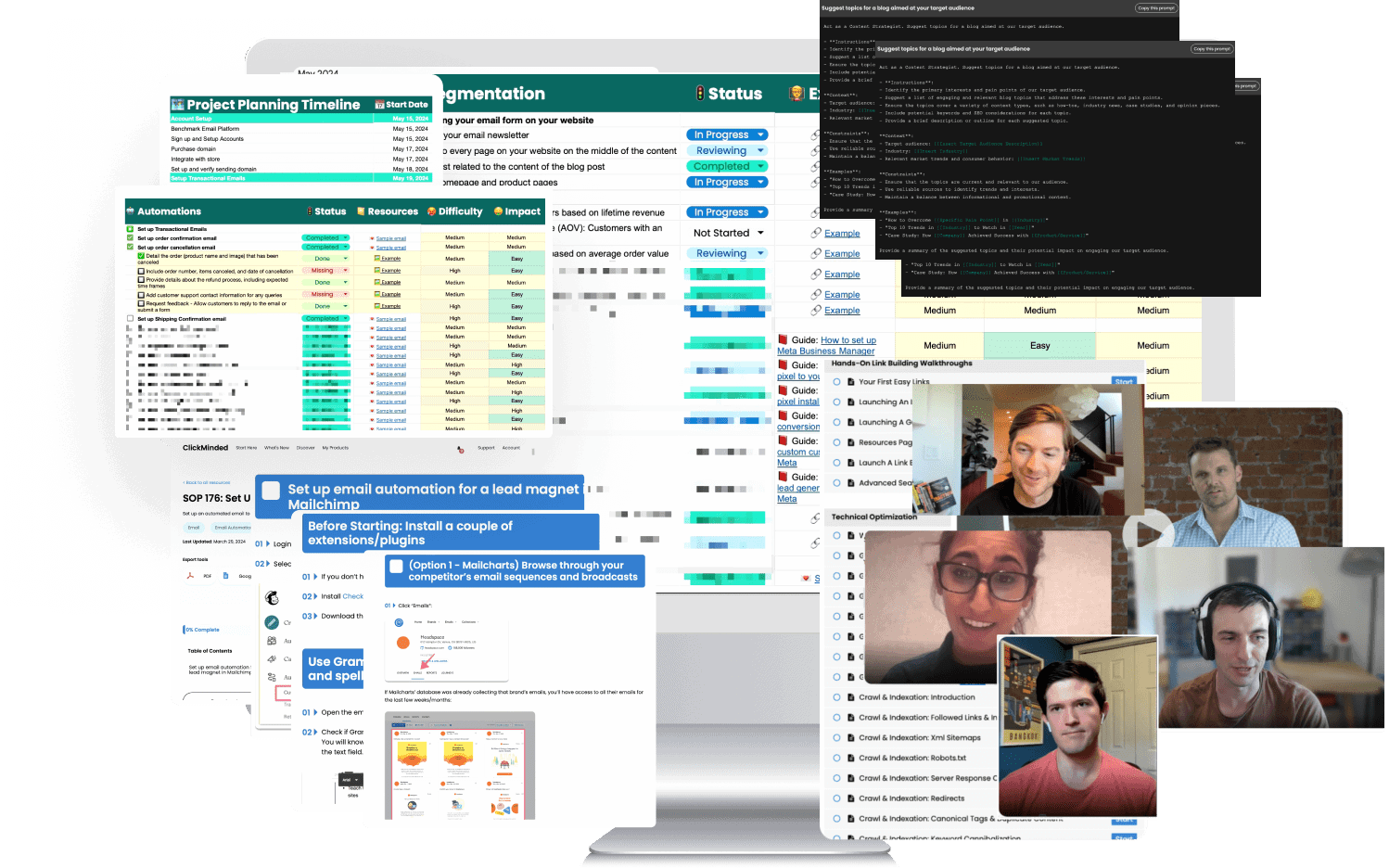📈
Your Goal at the Retention Stage: Increase Lifetime Value
In the retention stage, your marketing persona is already a customer of your product. Your objective is to increase the value you can extract from them directly by generating repeat purchases, upsells, or reducing churn; or indirectly by improving brand image or promoting referrals.
Customer lifetime value (CLV)
📝
Content Marketing
The objective of the content you'll create at the retention stage is to keep your existing customers happy by providing ongoing value (even after purchasing.)
Content ideas:
Monthly blog post: 'How to Maintain Your Eco-Friendly Products for Longevity' providing valuable care tips and usage advice.
Customer spotlight video series showcasing how families like Emma's and Fiona's integrate eco-friendly products into their daily lives.
Infographic: 'The Environmental Impact of Your Eco-Friendly Choices Over Time' highlighting the benefits of sustainability.
Quarterly webinar: 'Using Eco-Friendly Products Effectively: Real-Life Examples and Tips' to foster a sense of community and experience sharing.
Email campaign featuring success stories from other users highlighting their long-term satisfaction with eco-friendly products and their impact.
Loyalty program updates explaining how members can maximize rewards from repeat purchases.
What to measure:
Engagement rates on retention content
Time spent on retention-related pages
Participation in webinars or live events
🔎
SEO
At the bottom of the funnel, you'll want to make sure your marketing persona can find all the information she needs to get the most of your product (e.g. knowledge base articles), or to solve any problems that may arise (e.g. support/contact page.)
Keyword ideas:
How to care for eco-friendly household products
Benefits of using sustainable products long-term
Eco-friendly product maintenance tips
Best practices for eco-friendly living with children
Comparing performance: eco-friendly vs conventional items over time
User success stories with eco-friendly products
Savings from using eco-friendly products long-term
Top eco-friendly brands to consider for diverse needs
Cleaning tips for maintaining eco-friendly products
Understanding the lifecycle of eco-friendly materials
What to measure:
Organic traffic to retention-focused content
Keyword rankings for long-term eco-friendly searches
Bounce rate on retention articles
🎯
Paid Advertising
At this stage of the funnel, you might choose to be run campaigns promoting of new features, upgrades, or promotions.
Target audience ideas:
[Remarketing] Facebook Ads: Target customers who haven’t made a purchase in the last 30 days, highlighting new eco-friendly arrivals.
[Remarketing] Google Ads: Retarget visitors of loyalty program pages, showcasing benefits and enticing offers.
[Prospecting] Instagram Ads: Target eco-conscious individuals interested in sustainability updates and eco-friendly product usage tips.
[Remarketing] YouTube Ads: Show ads to previous customers promoting new tips and success stories around existing product lines.
[Prospecting] Pinterest Ads: Showcase infographics and success stories related to eco-friendly living targeting users interested in sustainable health.
What to measure:
Return on ad spend (ROAS) for retention campaigns
Cost per retained customer
Ad engagement rate on loyal customer segments
📱
Social Media
Retention campaigns on social media revolve around building a sense of community with your existing customers. You'll do a lot of monitoring of brand mentions on social media.
Social media campaign ideas:
Create posts featuring user-generated content where customers showcase their favorite eco-friendly experiences.
Establish a monthly Q&A session on Instagram Live focusing on product maintenance and sustainability practices.
Run a campaign encouraging customers to share how they're integrating eco-friendly products into their routines for potential brand features.
Monitor social media mentions for customer feedback, responding promptly to ensure resolution and gather testimonials.
Collaborate with eco-conscious influencers to discuss best practices in sustainable living related to product use.
What to measure:
Engagement rates on community-driven content
Growth in followers from retention-focused content
Responses to social media campaigns
📧
Email Marketing
Retention email campaigns will be a mix of educational emails (onboarding, activation, etc), transactional emails (reports, receipts, reminders, etc), and promotional emails (upgrades, upsells, etc.)
Email marketing campaign ideas:
Monthly newsletter summarizing best practices for using and maintaining eco-friendly products.
Exclusive promotions for loyalty program members to keep them engaged and encourage repeat purchases.
Feedback email after purchase, asking customers about their experiences with eco-friendly products to improve services.
Educational email series focused on the environmental impact of continued sustainable choices.
Invitation for customers to participate in a referral program where they can invite friends for discounts.
What to measure:
Open rates on retention-focused emails
Click-through rates on promotional emails
Response rate to feedback requests
🧪
Marketing Experiments
Your retention experiments will have the objective of maximizing lifetime value of existing customers.
Experiment ideas:
A/B test loyalty program sign-up incentives to identify which offers increase retention and repeat purchases.
Evaluate customer journeys to identify drop-off points for engagements after purchase and implement retention strategies.
Use customer feedback to optimize the retention email sequence, adjusting content based on common themes.
Implement exit surveys for customers not participating in the loyalty program to understand barriers.
Test different layouts for the loyalty program section on the website to simplify navigation and understanding of benefits.
What to measure:
Retention rates post-implementation of funnel changes
Conversion rates of loyalty program sign-ups
Customer satisfaction scores post-engagement
